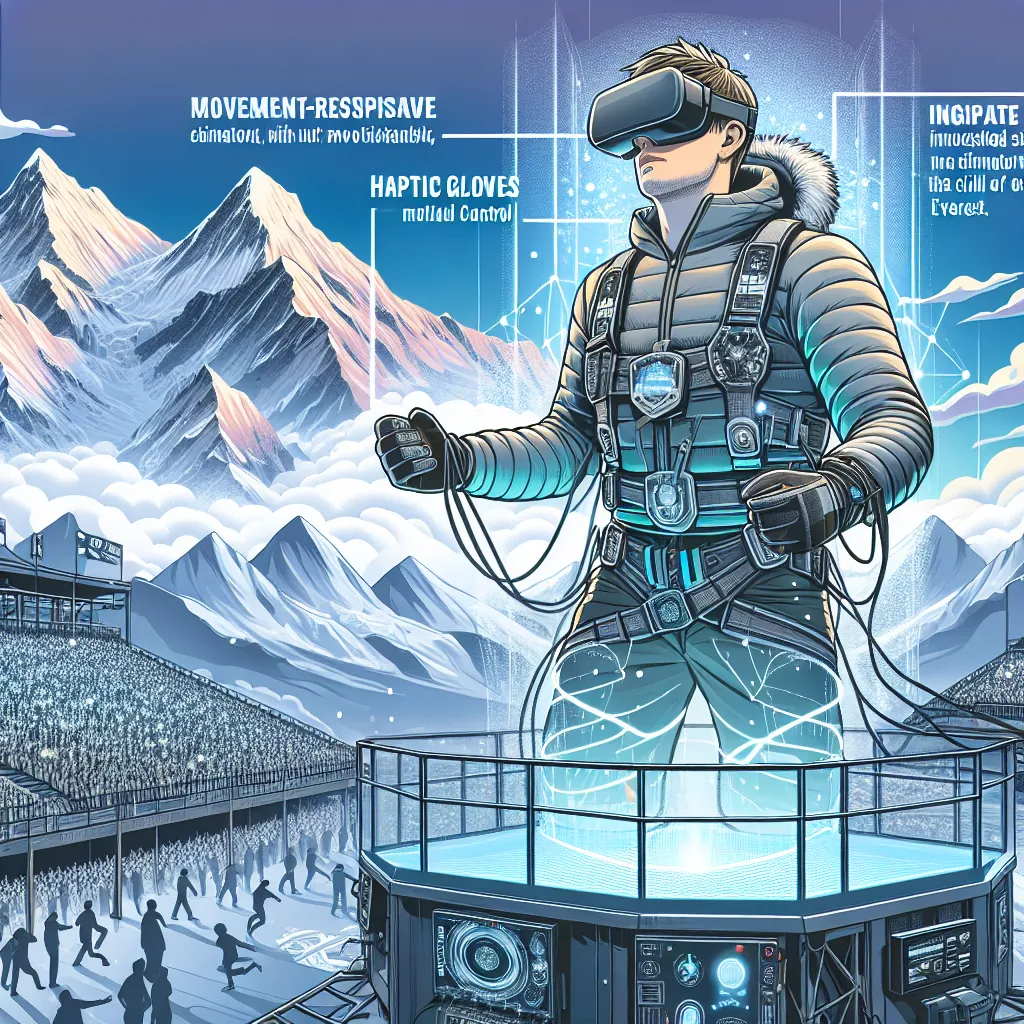As an experienced IELTS Speaking examiner, I’m here to guide you through one of the common topics that may appear in your IELTS Speaking test: describing a virtual experience that felt very realistic. This topic has become increasingly relevant in recent years due to advancements in virtual reality technology, and it’s likely to remain a popular subject in future IELTS exams.
Nội dung bài viết
- Part 1: Introduction and Interview
- Q: Have you ever tried any virtual reality experiences?
- Part 2: Long Turn (Cue Card)
- Follow-up Questions:
- Part 3: Two-way Discussion
- Q: How do you think virtual reality will impact education in the future?
- Q: What are some potential drawbacks of increased use of virtual reality in daily life?
- Key Vocabulary and Phrases for High Scores
- Tips from an IELTS Speaking Examiner
Part 1: Introduction and Interview
In this section, the examiner may ask you some general questions about virtual experiences. Here’s an example question with a suggested answer:
Q: Have you ever tried any virtual reality experiences?
Band 6-7 Answer:
Yes, I have. I tried a virtual reality game at an arcade recently. It was quite interesting to feel like I was in a different world.
Band 8-9 Answer:
Absolutely! I’ve had the opportunity to immerse myself in several virtual reality experiences. Most recently, I participated in a VR simulation of deep-sea exploration, which was not only captivating but also educational. The level of detail and interactivity was astounding.
Part 2: Long Turn (Cue Card)
Here’s a potential cue card related to the topic:
Describe a virtual experience that felt very realistic. You should say:
- What the experience was
- When and where you had this experience
- Who you were with
- And explain why it felt so realistic
Band 6-7 Sample Answer:
I’d like to talk about a virtual reality experience I had last month. It was a simulation of climbing Mount Everest. I tried it at a tech expo in my city with my friend Tom.
The experience felt very realistic because of the high-quality graphics and the special equipment. We wore VR headsets and used handheld controllers. The visuals were very detailed, showing the snow, rocks, and sky clearly. I could even feel the cold through some temperature controls in the suit I wore.
What made it really realistic was the physical aspect. We had to actually move our arms and legs as if we were climbing. The floor beneath us moved to simulate the slope of the mountain. At some points, I actually felt a bit scared looking down from high places in the game.
Overall, it was an exciting experience that gave me a taste of what climbing Everest might be like, without the actual danger.
Band 8-9 Sample Answer:
I’d like to recount a particularly immersive virtual reality experience I had the privilege of trying about three months ago. It was a cutting-edge simulation of climbing Mount Everest, which I encountered at a prestigious tech expo in the heart of Silicon Valley. I was fortunate enough to share this experience with my colleague, Tom, who’s equally enthusiastic about emerging technologies.
The realism of the experience was truly remarkable, primarily due to the state-of-the-art equipment and meticulously crafted software. We were equipped with high-resolution VR headsets and haptic feedback gloves, which significantly enhanced the sensory experience. The visual fidelity was astounding – every crevasse, ice formation, and distant peak was rendered with painstaking detail.
What truly elevated the experience to new heights of realism was the multisensory approach. The platform we stood on dynamically adjusted to mimic the varying slopes and terrains of the mountain. Moreover, a sophisticated climate control system replicated the bone-chilling temperatures one would encounter at such altitudes. The combination of these elements created an experience so authentic that at times, I found myself genuinely apprehensive when peering over virtual precipices.
The pinnacle of realism, however, was achieved through the integration of actual climbing movements. We had to physically exert ourselves, reaching for handholds and placing our feet carefully, which triggered corresponding actions in the virtual world. This seamless blend of physical and virtual interactions truly blurred the line between reality and simulation.
In conclusion, this experience was not merely entertaining but profoundly insightful. It offered a glimpse into the formidable challenges faced by mountaineers, fostering a deep appreciation for their skills and determination. The level of immersion was so convincing that it left an indelible impression, making me reflect on the potential of VR technology to provide unparalleled experiential learning opportunities.
Follow-up Questions:
- How did this experience change your view of virtual reality technology?
Band 6-7 Answer:
This experience really showed me how advanced VR has become. I was surprised by how real it felt and now I think VR has a lot of potential for education and training.
Band 8-9 Answer:
This experience was truly eye-opening and fundamentally shifted my perspective on virtual reality technology. It demonstrated the immense potential of VR beyond mere entertainment. I now see it as a powerful tool for education, professional training, and even therapeutic applications. The level of immersion and realism achieved has convinced me that VR can offer unparalleled experiential learning opportunities in fields ranging from medicine to aerospace.
- Do you think virtual experiences can replace real-life experiences?
Band 6-7 Answer:
I don’t think virtual experiences can completely replace real-life ones. They’re good for practicing or learning about dangerous situations, but real experiences have emotions and consequences that VR can’t replicate.
Band 8-9 Answer:
While virtual experiences have come a long way in terms of realism, I believe they complement rather than supplant real-life experiences. VR excels in providing safe environments for training, simulating high-risk scenarios, and offering experiences that might be physically or financially inaccessible to many. However, real-life experiences encompass a range of intangible elements – the unpredictability, the emotional depth, and the lasting consequences – that even the most sophisticated VR systems struggle to fully replicate. That said, as technology continues to advance, the line between virtual and real experiences may become increasingly blurred, potentially revolutionizing how we learn, train, and even socialize in the future.
 Immersive virtual reality experience
Immersive virtual reality experience
Part 3: Two-way Discussion
In this section, the examiner will ask more abstract questions related to the topic. Here are some potential questions with sample answers:
Q: How do you think virtual reality will impact education in the future?
Band 6-7 Answer:
I think virtual reality will make education more interesting and interactive. Students could visit historical places or see scientific processes in 3D, which would help them understand better. It could also allow for virtual field trips, which would be great for schools with limited budgets.
Band 8-9 Answer:
I believe virtual reality has the potential to revolutionize education in numerous ways. Firstly, it can provide immersive learning experiences that are otherwise impossible or impractical in a traditional classroom setting. For instance, history students could virtually witness significant historical events, while biology students could explore the intricate workings of the human body from within.
Moreover, VR could significantly enhance distance learning by creating virtual classrooms where students and teachers can interact as if they were physically present. This could democratize access to quality education, allowing students from remote areas to participate in lectures and workshops conducted by experts worldwide.
Additionally, VR simulations could offer safe environments for students to practice skills in fields like medicine or engineering, allowing them to gain valuable hands-on experience without real-world risks. This could bridge the gap between theoretical knowledge and practical application, producing more competent and confident graduates.
However, it’s crucial to strike a balance between virtual and real-world experiences. While VR can augment traditional teaching methods, it shouldn’t completely replace face-to-face interactions and real-world problem-solving, which are essential for holistic development.
Q: What are some potential drawbacks of increased use of virtual reality in daily life?
Band 6-7 Answer:
Some drawbacks could be that people might become addicted to virtual worlds and neglect real life. It could also cause physical problems like eye strain or dizziness. There’s also the issue of privacy, as VR systems might collect a lot of personal data.
Band 8-9 Answer:
While virtual reality offers numerous benefits, its increased integration into daily life could pose several challenges. Firstly, there’s a risk of social isolation. As people become more immersed in virtual environments, they might neglect real-world relationships and social skills, potentially leading to a decline in face-to-face interactions and emotional intelligence.
Secondly, there are health concerns to consider. Prolonged use of VR could lead to physical issues such as eye strain, motion sickness, and a sedentary lifestyle. There’s also the potential for psychological effects, including addiction to virtual experiences or difficulty distinguishing between virtual and real worlds.
Privacy and security are other critical concerns. VR systems often collect vast amounts of personal data, including physical movements and potentially even biometric information. This raises questions about data ownership, consent, and the potential for misuse or breaches.
Furthermore, the digital divide could be exacerbated. As VR technology becomes more prevalent in areas like education and job training, those without access to these technologies might find themselves at a significant disadvantage.
Lastly, there’s the risk of escapism. While VR can offer valuable experiences, overreliance on virtual worlds as a means of avoiding real-world problems could hinder personal growth and societal progress.
To mitigate these risks, it’s crucial to implement robust regulations, promote responsible use, and continue researching the long-term effects of VR technology on individuals and society.
Key Vocabulary and Phrases for High Scores
-
Immersive /ɪˈmɜːrsɪv/ (adj): Providing, involving, or characterized by deep absorption or immersion in something.
Example: The VR experience was so immersive that I forgot I was in a simulation. -
Cutting-edge /ˈkʌtɪŋ edʒ/ (adj): The most advanced stage of development; innovative or pioneering.
Example: The tech expo showcased cutting-edge virtual reality technologies. -
Haptic /ˈhæptɪk/ (adj): Relating to the sense of touch, especially relating to the perception and manipulation of objects using the senses of touch and proprioception.
Example: The haptic feedback gloves added a new dimension of realism to the VR experience. -
Meticulously /məˈtɪkjələsli/ (adv): In a way that shows great attention to detail; very carefully and precisely.
Example: The virtual environment was meticulously crafted to replicate every aspect of Mount Everest. -
Seamless /ˈsiːmləs/ (adj): Smooth and continuous, with no apparent gaps or spaces between one part and the next.
Example: The seamless integration of physical movements with the virtual world enhanced the realism of the experience. -
Revolutionize /ˌrevəˈluːʃənaɪz/ (v): To change (something) radically or fundamentally.
Example: Virtual reality has the potential to revolutionize many aspects of our lives, from education to healthcare.
Tips from an IELTS Speaking Examiner
-
Practice regularly: Engage in English conversations daily, even if it’s just talking to yourself about your day.
-
Expand your vocabulary: Learn new words and phrases related to technology and virtual experiences. Use them naturally in your responses.
-
Work on fluency: Focus on speaking smoothly without too many pauses. It’s okay to use fillers like “um” or “well” occasionally, but don’t overuse them.
-
Develop your ideas: Don’t just give short answers. Expand on your points and provide examples to support your opinions.
-
Listen carefully: Make sure you understand the question fully before answering. It’s okay to ask for clarification if needed.
-
Use a variety of grammatical structures: Mix simple and complex sentences to demonstrate your language proficiency.
-
Be authentic: Share your genuine thoughts and experiences. Examiners appreciate honest, thoughtful responses.
-
Stay calm: Remember, the examiner is there to give you opportunities to showcase your English skills, not to trick you.
By following these tips and using the sample answers as inspiration, you’ll be well-prepared to tackle questions about virtual experiences in your IELTS Speaking test. Remember, practice makes perfect!


